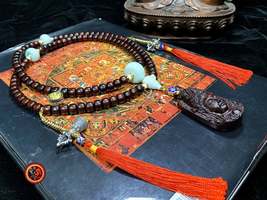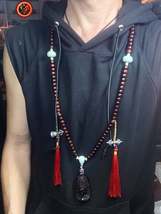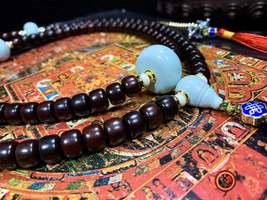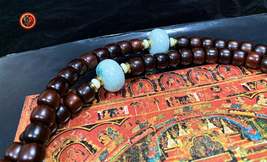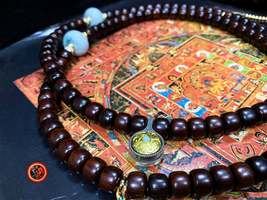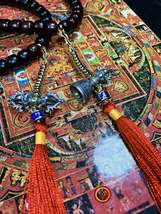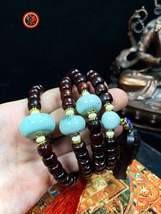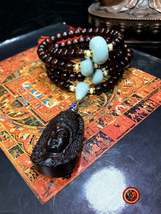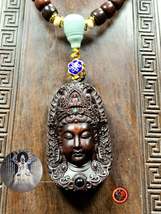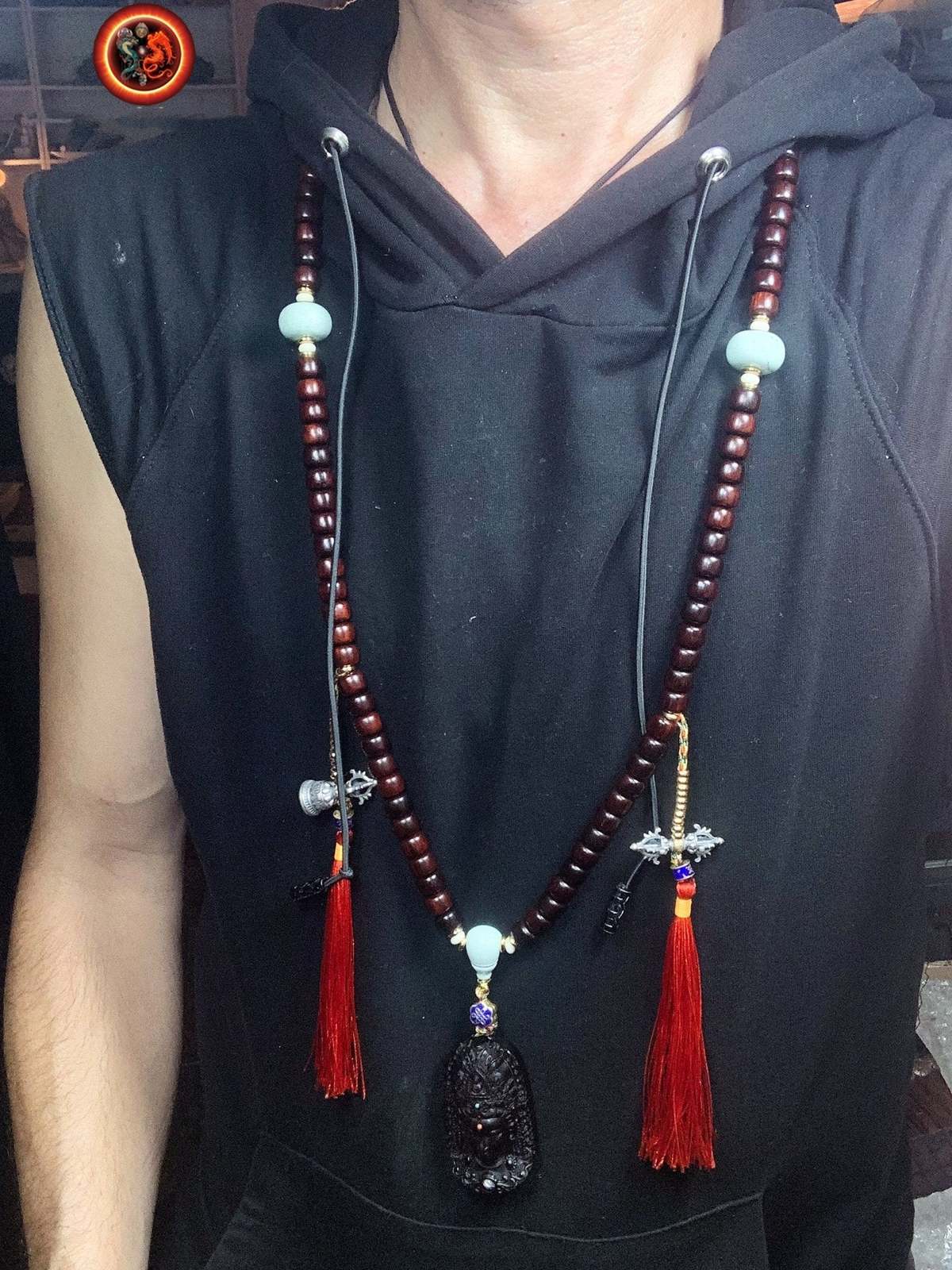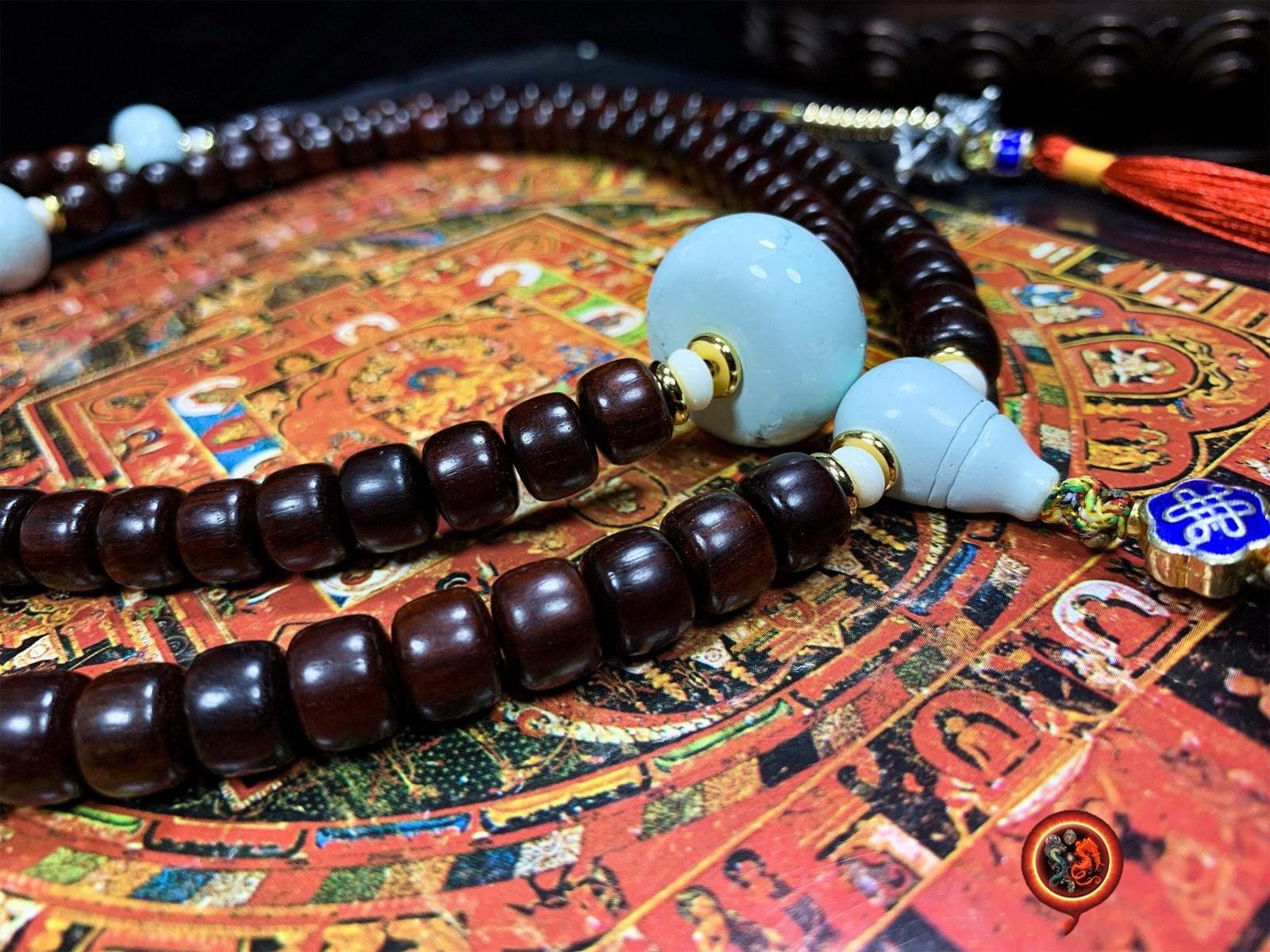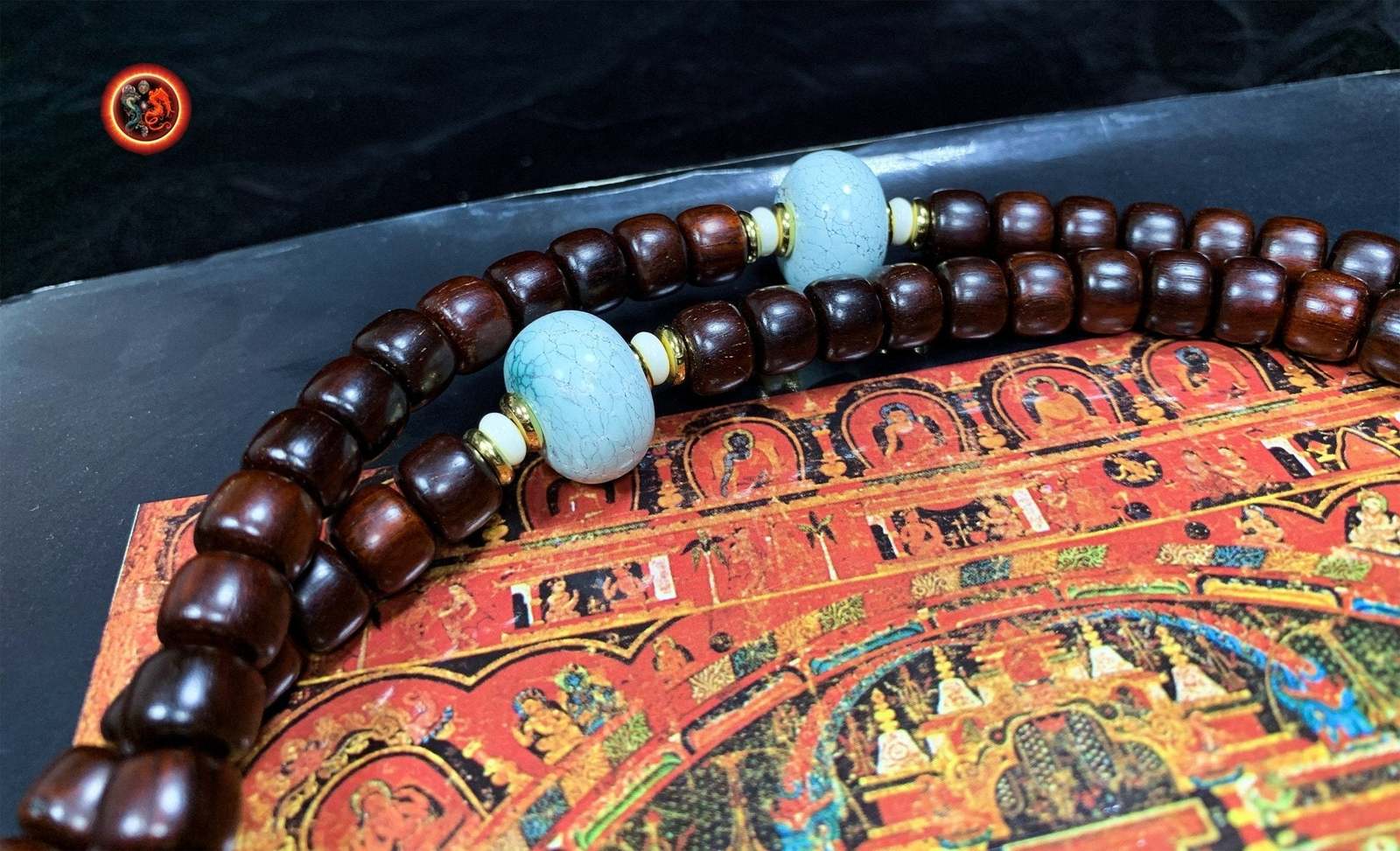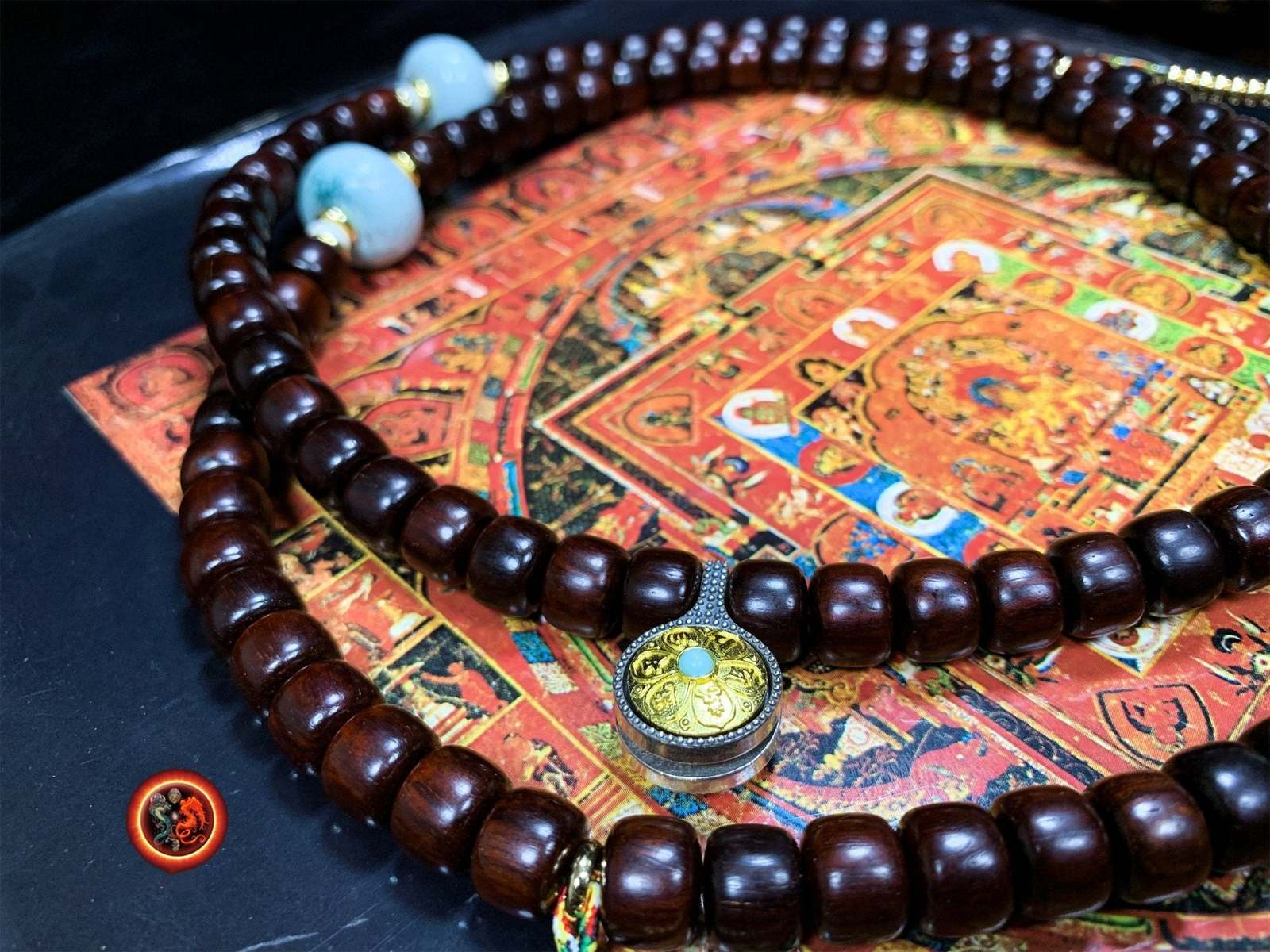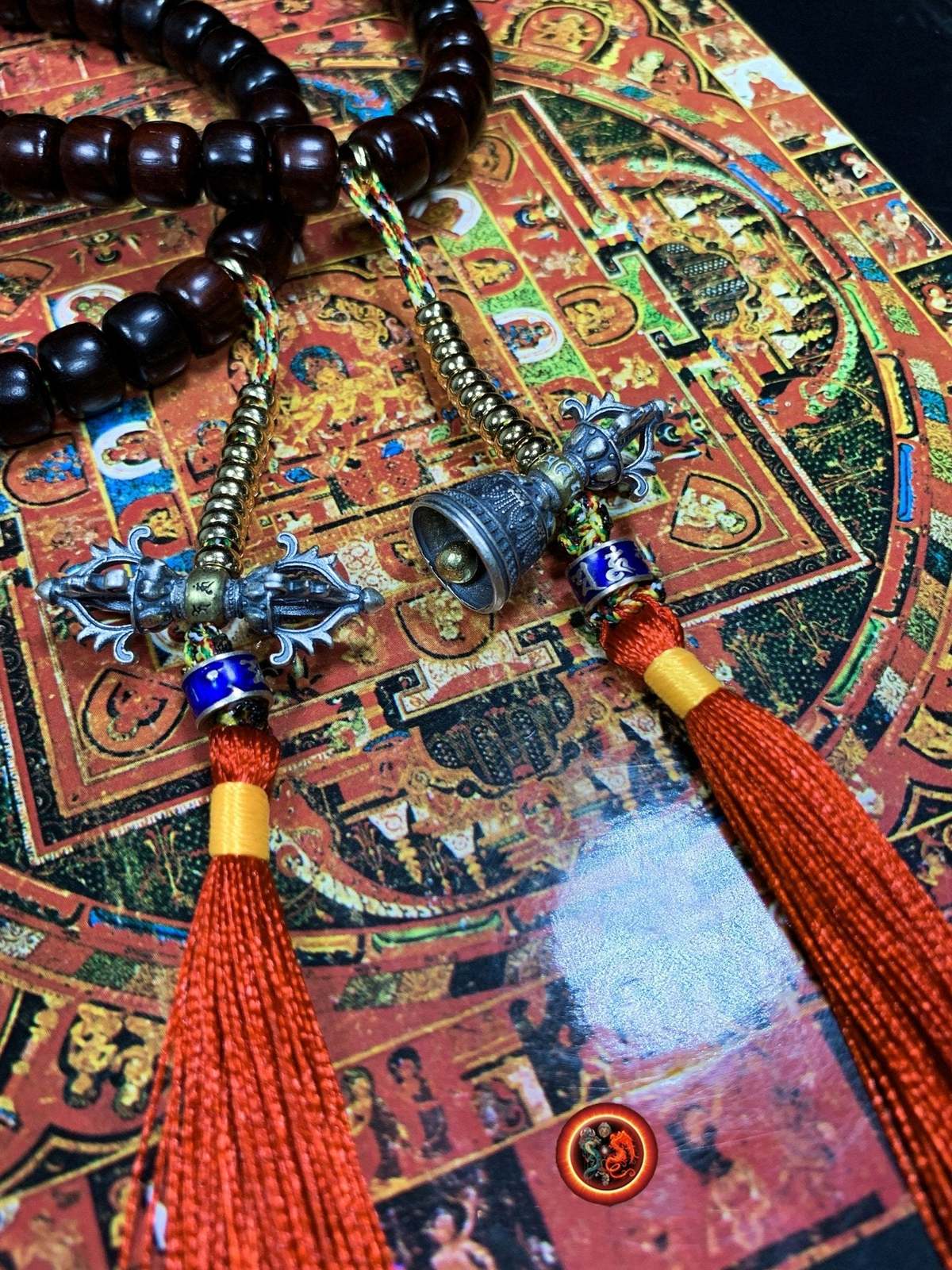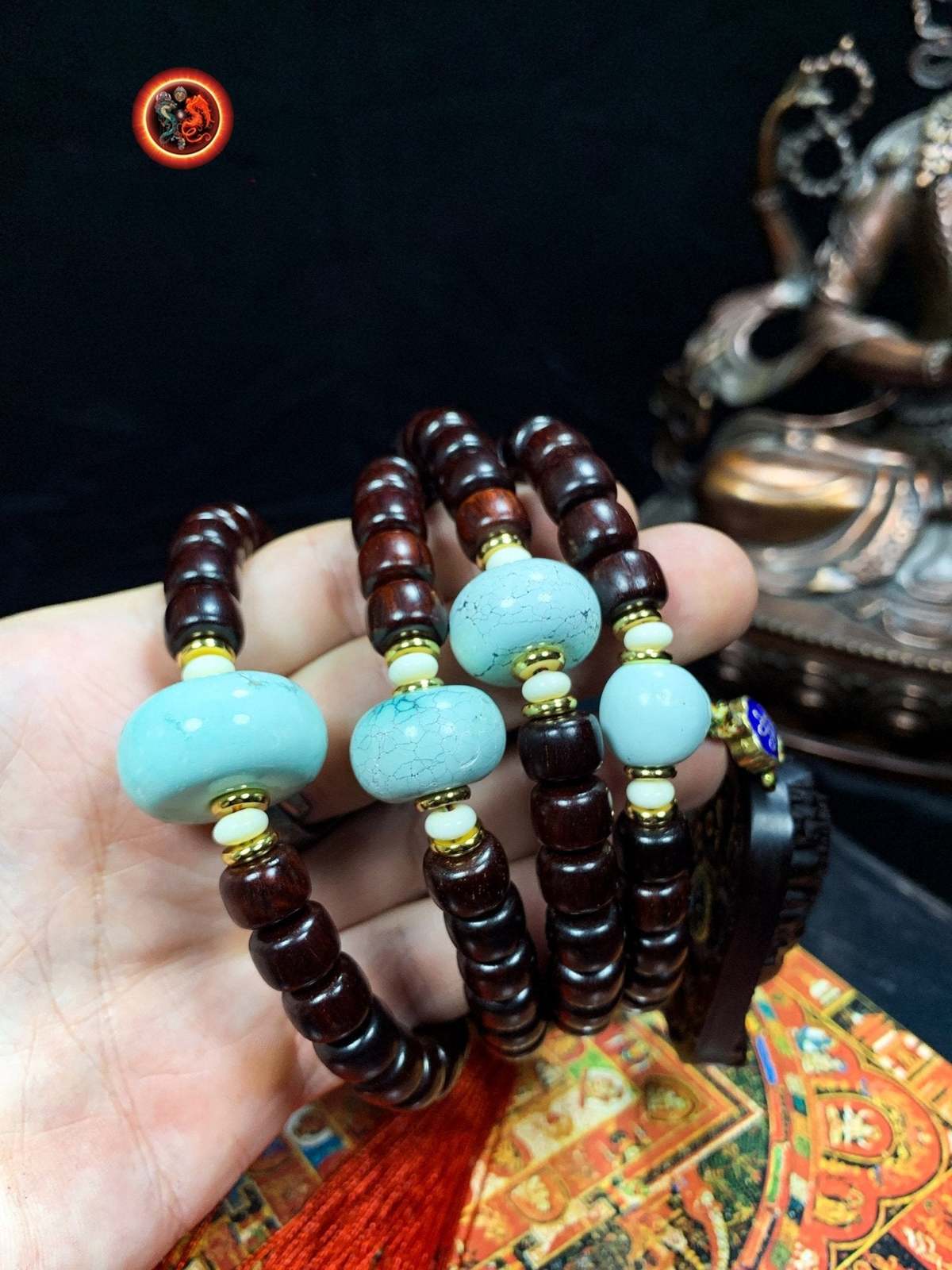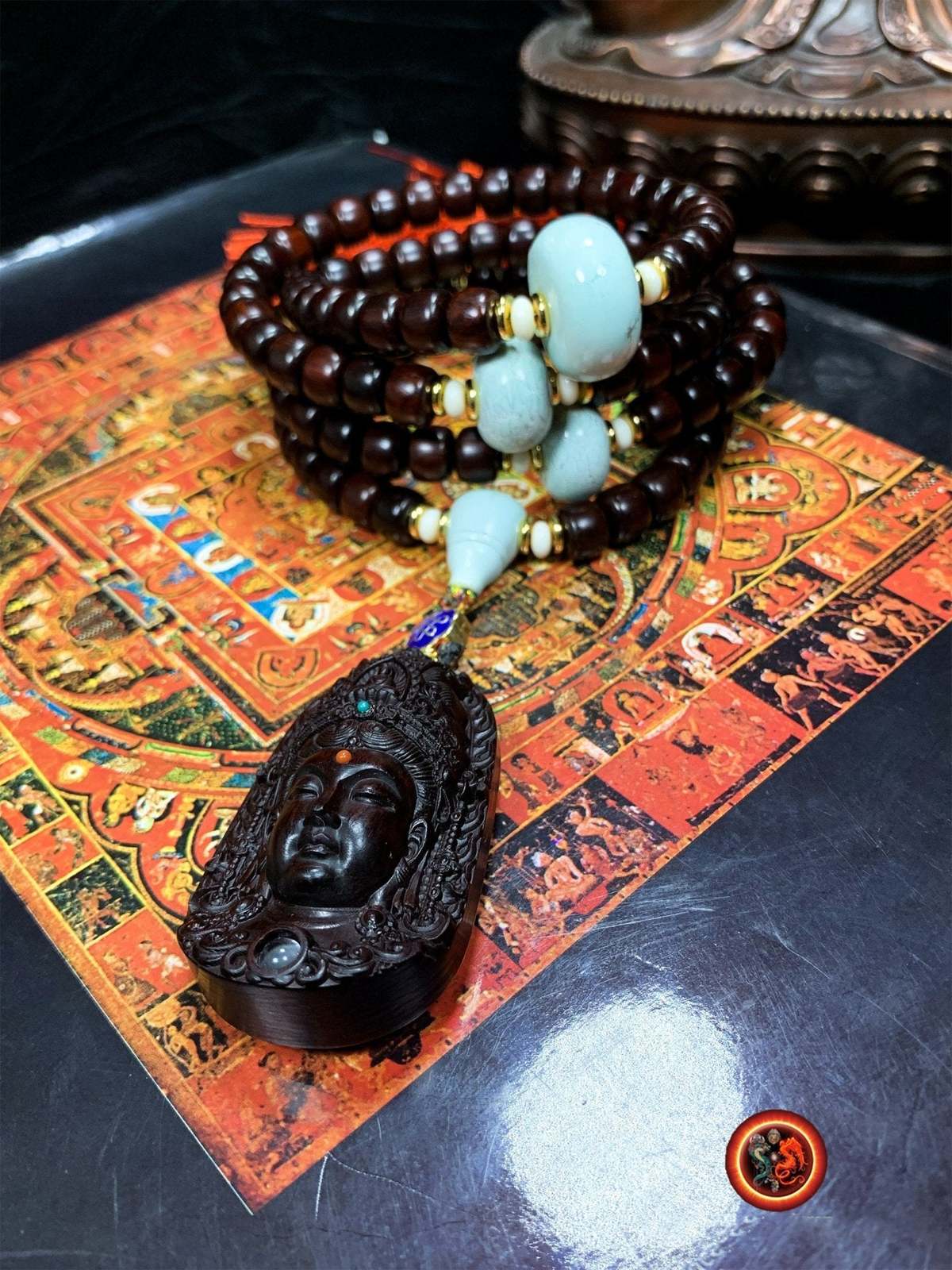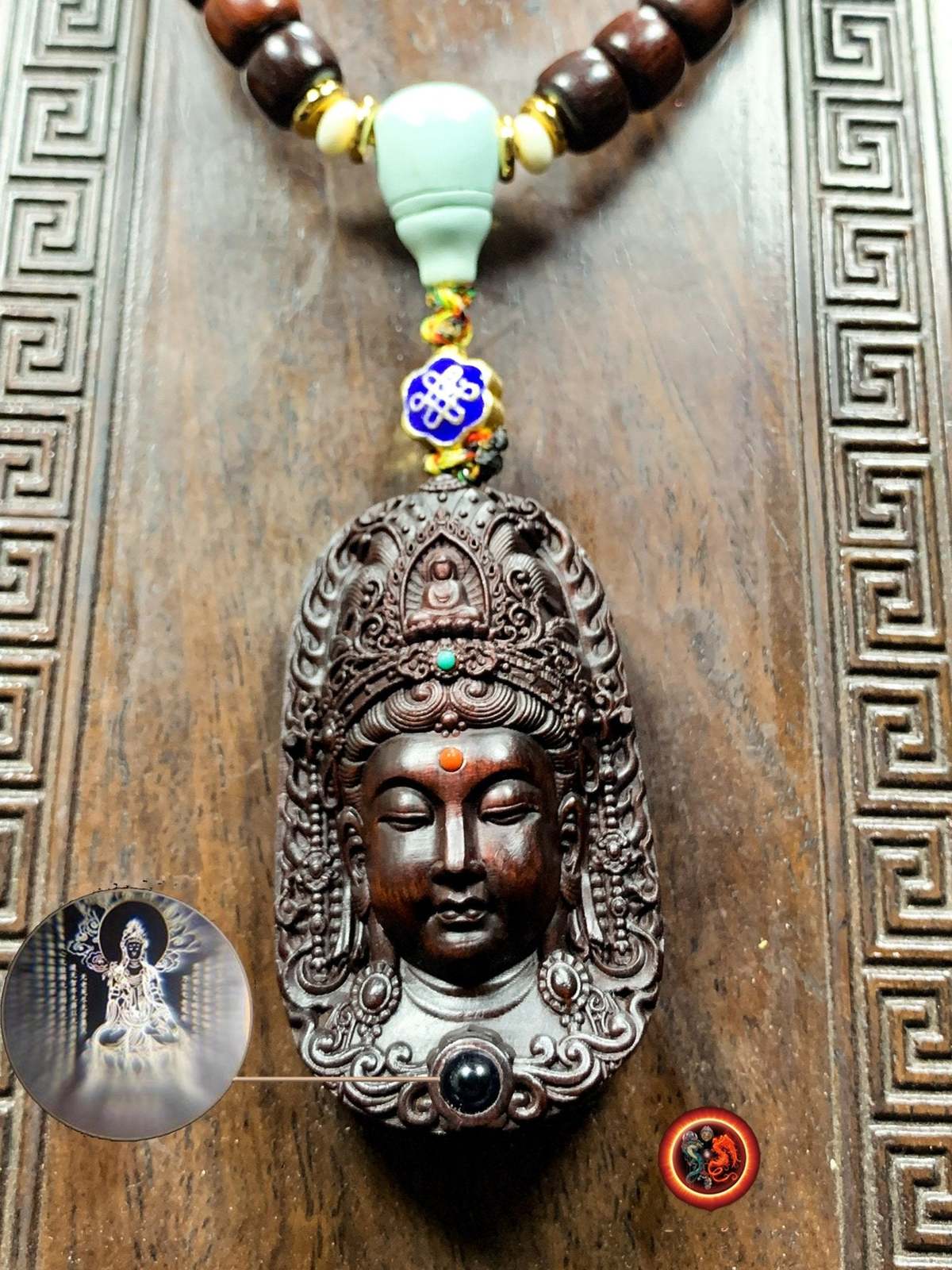Rendered at 07:18:26 10/21/25
Sign up and get $15.00 bCredits free to use at checkout and another $5.00 bCredits when you make your first purchase. More info
Free Shipping
Mala, traditional Tibetan Buddhist. 108 red sandalwood beads. Real turquoises
$1,242.87 CAD
Sign up and get $15.00 bCredits free to use at checkout and another $5.00 bCredits when you make your first purchase. More info
Ships from
France

Share & earn! Sign in, share this or any listing, and you’ll get commission when it sells.
Learn more
Shipping options
Offer policy
OBO - Seller accepts offers on this item.
Details
Return policy
Full refund available for DOAs
Purchase protection
Payment options
PayPal accepted
PayPal Credit accepted
Venmo accepted
PayPal, MasterCard, Visa, Discover, and American Express accepted
Maestro accepted
Amazon Pay accepted
Nuvei accepted
Shipping options
Offer policy
OBO - Seller accepts offers on this item.
Details
Return policy
Full refund available for DOAs
Purchase protection
Payment options
PayPal accepted
PayPal Credit accepted
Venmo accepted
PayPal, MasterCard, Visa, Discover, and American Express accepted
Maestro accepted
Amazon Pay accepted
Nuvei accepted
Item traits
| Category: | |
|---|---|
| Quantity Available: |
Only one in stock, order soon |
| Condition: |
Unspecified by seller, may be new. |
| Material: |
red santal rare quality, natural turquoises |
Listing details
| Seller policies: | |
|---|---|
| Shipping discount: |
Seller pays shipping for this item. |
| Posted for sale: |
More than a week ago |
| Item number: |
1498005032 |
Item description
The mala, trengwa, in Tibetan is the Buddhist rosary, the object whose
monk (or even the lay practitioner) almost never separates, holding him to the
hand or wraps around the wrist. The mala is first of all a utilitarian object:
it serves as a tactile support for the recitation of mantras, at the same time as it is
used to count them if we have decided to repeat a defined number. THE
mala is composed of 108 strung beads, which justifies its name, since it
simply means "garland" (of beads). The different components contain
each a symbolic meaning specify: The large pearl (or head of
Buddha) which closes the circle represents the knowledge of emptiness. The little
cone which surmounts it is the mark of emptiness itself.
As a gemologist graduated from the National Institute of Gemmology in Paris,
all our stones are appraised and certified.
As Malakara, we make all of our malas ourselves, scrupulously respecting tradition.
Size of the mala: Total length 57cm, weight 161.5 grams.
Dimensions of each bead: 10mm by 8.5mm
108 beads of red sandalwood collection quality, rare and exceptional quality very rare hence the high price of this mala.
This red sandalwood, from India, much rarer than white sandalwood, has no characteristic smell and is one of the very precious woods.
In Buddhism, sandalwood is one of the Padma (lotus) and corresponds to Amitabha Buddha, moreover the element of this Buddha is fire and its color, red. Sandalwood is believed to be able to transform the desires and retain the attention of a person practicing meditation. Sandalwood is one of the main constituents of incense made in China, Taiwan, Japan, Vietnam, Korea, and is intended to be lit in temples or during worship. It is also widely used in India for these same applications.
In counter-pearls, 3 authentic and natural turquoises
Dimension of the central pearl 24mm high by 13.5mm thick Weight of 55 carats
second 19mm high by 11mm thick Weight of 27 carats Third 18.7mm high by 11.5mm thick Weight of 27 carats also Finishing pearl or Guru pearl also in turquoise 22.8mm high by 14.2mm wide by 12.8 mm thick Weight of 16.5 carats
Total weight in turquoise: 125.5 carats
Pendant, Buddhist, Buddha. Guan Yin, Chenrezi. Very high quality red sandalwood, turquoise, nan hong agate, rotating mantra on the back
sutra of the heart in nanoscript visible by transparency in the light by effect
magnifying glass, as shown in the third photo.
mantra of compassion "Om Mani Padme hum" spinning on the reverse.
Pendant size: 59mm long by 34.4mm wide by 20mm thick
Pendant weight: 29.5 grams.
BODHISATTVA GUAN YIN / CHENREZI
Bodhisattva Avalokiteshvara (Hindi ???????????? Avalokite?vara “lord who
watch from above”, Chinese ??? Gu?nshìy?n or ?? Gu?ny?n, Shanghainese
Kueu(sy)'in, Korean Gwanseeum ???, Japanese ?? Kan'non, Tibetan Chenrezig,
Vietnamese Quan Th? m, Indonesian Kwan Im, Khmer ???????? Lokesvara), is without
doubt the most revered and popular great bodhisattva among the
Buddhists of the Great Vehicle. It is also used as a yidam (deite
tutelary) in tantric meditations. Protean Bodhisattva and
syncretic (he can represent all the other bodhisattvas), embodying the
ultimate compassion, he can be feminine in China, Korea, Japan and
Vietnam, in the form of Quan Yin. He is considered the protector of Tibet.
where King Songtsen Gampo and later the Dalai Lamas are seen as his
fumes. This is also the case with other tulku such as the karmapa.
Also called Padmap??i or Ma?ipadm?, he is invoked by the famous mantra Om?
Ma?ipadme h?m (?????????????). Chenrezi is the bodhisattva of love and
compassion.
The purpose of Chenrezi Puja is to develop loving friendship and
compassion for all living beings without distinction. Chenrezi
manifested in different forms: the Chenrezi has 10 heads and 1000 arms of the
compassion is the best known: he promised his spiritual father, the Buddha
Amitabha, to expend all his energy to liberate all living beings and
not to rest until all living beings are delivered from
their suffering. Should he ever doubt his mission, 'then may my
head split into ten and my body into 1000'. When, after meditating on
deep manner and reciting the Mani Mantra continuously, he saw that
the ocean of suffering had still not emptied, so he fell into a
deep despair and broke his head in 10 and his body in 1000.
syllables OM MANI PEME HOENG is the best known mantra of Tibetan Buddhism.
MANTRA OF COMPASSION "OM MANI PADME HUM"
According to Tibetan Buddhism, reciting the Chenrezi Om Mani mantra
Padme Hum, aloud or internally, is an invocation to attention
benevolent and powerful of Chenrezig, the expression of the compassion of the
Buddha. Seeing the written mantra can have the same effect, it is for
that it is found in clearly visible places, even grave in the
rock. He can also be invoked using prayer wheels on
which the mantra is inscribed, sometimes thousands of times. It exists
different formats of prayer wheels: there are those that can be transported
with you and spin with one hand, and there are others who are so
large and so heavy that several people are needed to turn them. According
Tibetan Buddhist monks, the mantra Om Mani Padme Hum (Hung) unites a
alone all of the Buddha's teachings.
Each syllable closes a door of reincarnation:
OM: Closes the door to the world of the Devas (gods).
MA: Close the door to the world of the asuras (demi-gods).
NI: Close the door to the human world.
PAD: Close the door to the animal world.
ME: Close the door to the world of pretas ("greedy spirits").
HUNG: Shut the gate to hell. Each syllable purifies a veil:
OM: purifies the veil of the body.
MA: purifies the veil of speech.
NI: purifies the veil of the mind.
PAD: purifies the veil of contradictory emotions.
ME: purifies the veil of substantial existence.
HUNG: purifies the veil that covers knowledge.
Each syllable is a mantra in itself:
OM: for the body of the Buddhas.
MA: for the words of the Buddhas.
NI: for the mind of the Buddhas.
PAD: for the virtues of the Buddhas.
ME: for the accomplishments of the Buddhas.
HUNG: for the grace of body, speech, mind, virtue and all
the accomplishments of the Buddhas.
Each syllable corresponds to one of the six paradigms or perfections
transcendental:
OM: generosity.
MA: ethics.
NI: tolerance.
PAD: perseverance.
ME: concentration.
HUNG: discernment.
Each syllable is also connected to a Buddha:
OM: Ratnasambhava.
MA: Amaoghasiddi.
NI: Vajradhara
PAD: Vairocana.
ME: Amitabha.
HUNG: Akshobya.
Each syllable of the mantra purifies us of a defect:
OM: pride.
MA: the desire / the desire to have fun.
NI: passionate desire.
PAD: stupidity / prejudices.
ME: poverty / possessiveness.
HUNG: aggression / hatred.
Finally, each syllable corresponds to one of the six wisdoms:
OM: the wisdom of stability.
MA: all-fulfilling wisdom
NI: wisdom emanates from oneself
PAD: all-embracing wisdom (dharma)
ME: discriminating wisdom
HUNG: mirror-like wisdom.
Added to your wish list!
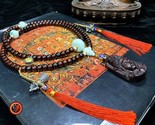
- Mala, traditional Tibetan Buddhist. 108 red sandalwood beads. Real turquoises
- 1 in stock
- Price negotiable
- Handling time 5 days.
- Returns/refunds accepted
Get an item reminder
We'll email you a link to your item now and follow up with a single reminder (if you'd like one). That's it! No spam, no hassle.
Already have an account?
Log in and add this item to your wish list.



